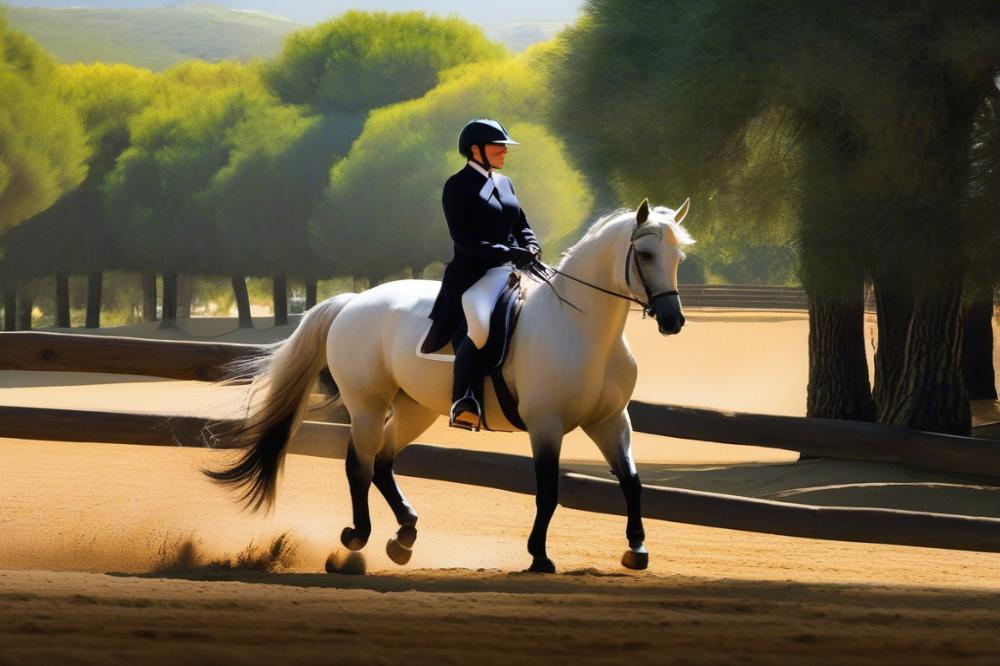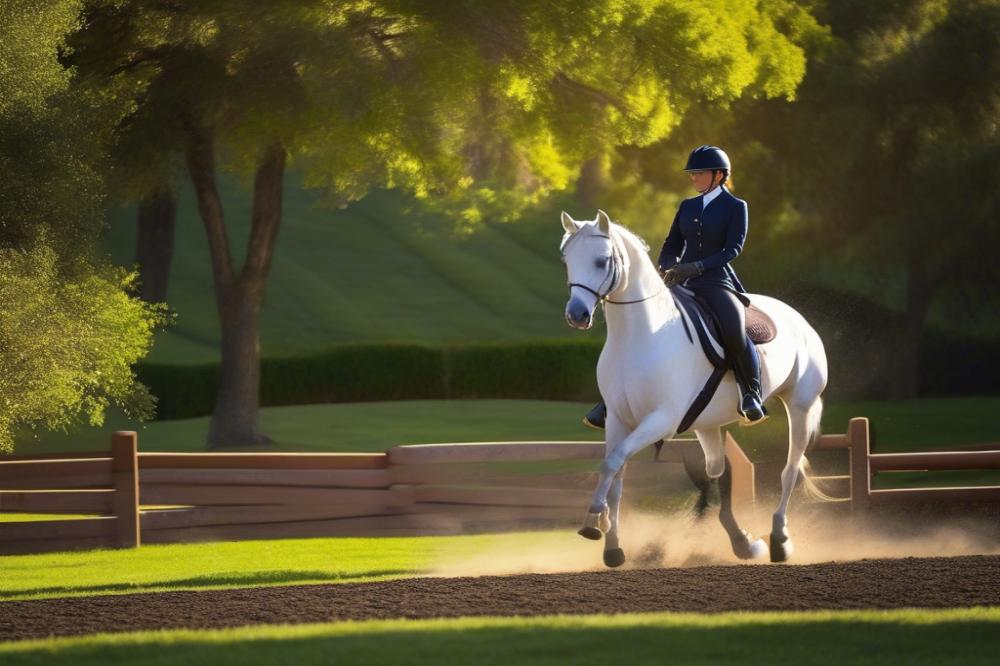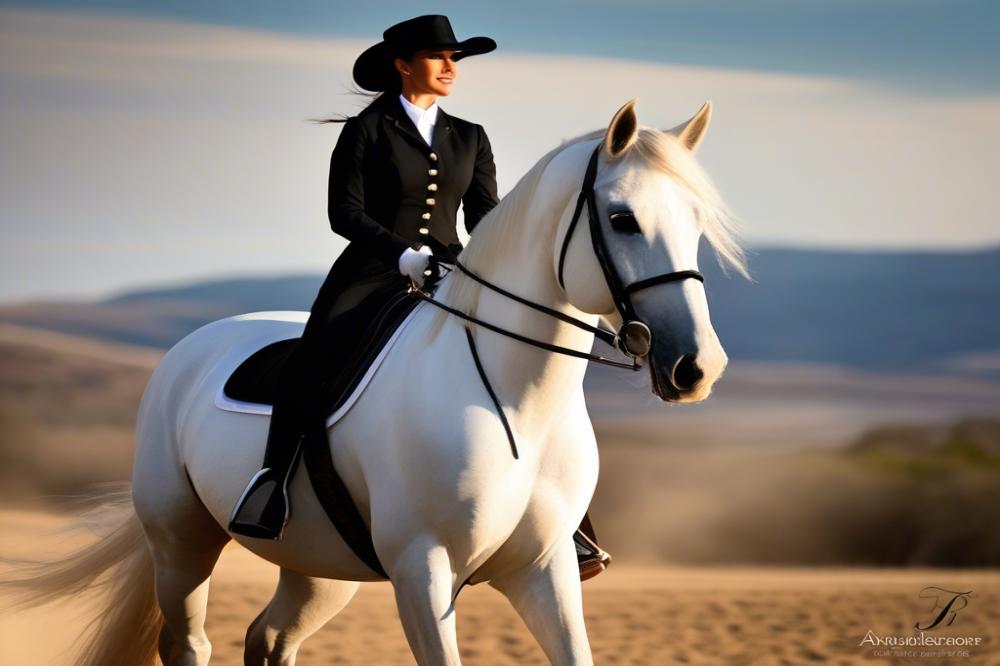How to Teach Advanced Riders to Ride Andalusians Safely
safety in horse riding is paramount. A well-prepared rider is essential for preventing accidents. Proper instruction can mean the difference between an enjoyable ride and a dangerous situation. Riders must adopt safety as a core principle. Knowledge about a horse’s behavior helps riders to anticipate unexpected actions and respond appropriately.
Andalusian Horses are known for their grace and strength. Their origins in Spain give them a rich history and a distinct look. Many riders admire their flowing manes and robust build. These horses are also highly intelligent and sensitive, making them both rewarding and challenging to ride. Understanding their temperament is crucial for any rider looking to gain a better experience in the saddle.
The goal of teaching riders to ride Andalusians safely is multifaceted. Riders must learn techniques that focus on communication with the horse. It involves mastering body language and cues. All riders benefit from learning to work in harmony with their horse’s movements. Each lesson plays a role in the overall safety of the riding experience.
As we dive deeper into effective training methods, a clear understanding of Andalusian behavior will aid in promoting a safe riding environment. With the right strategies, the joy of riding these magnificent creatures can be enhanced and made safer for all involved.
Understanding Andalusian Characteristics

Andalusians have distinct traits that define the breed. Their muscular build and flowing mane make them visually striking. Typically, they are known for their intelligence and sensitivity. This combination makes them versatile in different riding disciplines. Riders should appreciate the horse’s history rooted in conflict and celebration.
Temperament and Behavior Patterns Relevant to Riding
The Andalusian is often characterized by a calm demeanor, which is particularly advantageous for riders. They possess a strong willingness to please, a trait that fosters teamwork between horse and rider. However, sensitivity can also lead to quick reactions. It’s essential to maintain a relaxed atmosphere. An advanced rider must recognize when the horse is feeling tense or anxious.
Understanding how an Andalusian thinks is crucial. These horses thrive on consistent communication and clear cues. Their own instincts often drive them to conserve energy, making them efficient movers. Yet, this sometimes leads to reluctance or hesitation during challenging tasks. Recognizing the horse’s mood can aid in achieving better outcomes in training.
How Physical Attributes Affect riding techniques
The impressive physique of an Andalusian influences riding methods. Their strong hindquarters enable powerful movements and transitions. Balance becomes a vital aspect in riding them. The rider must be mindful of their own position to synchronize effectively with the horse’s rhythm.
Consequently, trainers should focus on building a solid foundation. The horse’s inherent traits can contribute to various riding styles. Working with these characteristics allows Advanced Riders to improve coordination and communication. This ensures a safer and more harmonious partnership with the Andalusian.
Safety Considerations for Advanced Riders

Rider safety is of paramount importance when riding any horse. This responsibility increases significantly with the Andalusian breed. These majestic animals possess a unique blend of strength and elegance. However, they can be sensitive and spirited. Awareness of your surroundings is crucial while riding. This includes being conscious of other riders, obstacles, and changes in the environment. A strong connection with the horse can often lead to a better understanding of its reactions.
Be mindful of common safety issues that arise when working with Andalusians. Their spirited nature may lead to sudden movements or unexpected behavior. Some horses may react strongly to loud noises or other distractions. Consequently, this can pose risks to both rider and horse. Additionally, their size and power can be intimidating. Riders should always approach Andalusians with respect and understanding. Gaining the horse’s trust is essential for a safe riding experience.
Precautions and Gear Recommendations
Adopting proper precautions can make a significant difference in safety. Wearing a well-fitted helmet is crucial. This protective gear can help prevent serious head injuries in case of falls. Sturdy boots with a defined heel will provide grip and stability. Selecting a comfortable saddle that fits both rider and horse promotes better control. Regular checks on all gear are wise to catch any wear and tear. Safety stirrups can also offer additional support, allowing quick release if necessary.
Consider utilizing training aids or safety equipment. A lunge line can be beneficial for training sessions. This allows for better control while the rider learns to communicate effectively with the horse. Additionally, employing ground poles or cones can help in practicing movements safely. Both rider and horse become more confident with repeated training. These tools can enhance understanding and bond between horse and rider.
Context matters when riding Andalusians. Always assess the emotional state of the horse before mounting. A calm horse results in a safer experience. Riders should avoid practicing new skills in crowded spaces. Choosing open areas where the rider can focus is essential. Establish firm communication with the horse throughout the ride. Understanding body language is key, as subtle cues can signal discomfort or eagerness.
Advanced riding techniques for Andalusians

Riding Styles Suitable for Andalusians
Andalusian Horses often display grace and agility. Dressage and classical riding styles complement their natural abilities. These styles emphasize precision in movement. They also focus on maintaining a rhythm that suits the horse’s unique gait. Riders should consider techniques like the half-halt to promote balance. Many also find that integrating lightness in the reins aids communication. Additionally, western riding techniques can be beneficial. They highlight the horse’s versatility, encouraging responsiveness.
Techniques for Improved Communication with the Horse
Establishing clear signals is crucial. Riders should remain aware of subtle cues. The use of the legs, seat, and hands can convey different messages. By using consistent aids, a horse can better understand what is being asked of it. Using soft and intentional leg pressures helps enhance responsiveness. Keeping an open and relaxed posture allows better flow of communication. Softening the hands while riding is another key technique. This action offers the horse comfort as they navigate through different movements.
Adjusting Riding Styles to Match Andalusian Movements
Understanding the Andalusian’s movement is vital. These horses are known for their powerful strides and impressive collected gaits. Adapting your riding style to their natural motion will yield positive results. Focusing on transitions can showcase their abilities. Make smooth changes from walk to trot to canter for seamless flow. Listening to the horse is also important; they will often indicate what feels most comfortable. Riders can practice various patterns to enhance responsiveness. This approach nurtures a deeper bond and builds trust with the horse.
Training Tips for Advanced Riders
Customized Training Approaches for Advanced Riders
Tailoring training methods is essential for experienced riders. Each horse has its strengths and weaknesses. Not every technique works for every pair. Observing both horse and rider can uncover areas needing improvement. Adjustments can include changing the pace or introducing new exercises. Fine-tuning the approach keeps things interesting and stimulating. Riders may benefit from varying their routines to maintain engagement.
Incorporating Equine Behavior Understanding into Training
Knowledge of equine behavior plays a vital role in training. Horses communicate through body language and vocalizations. Recognizing signs of discomfort or confidence is key. Riders must learn to read these signals to respond effectively. Creating a safe environment encourages trust between horse and rider. Patience is important when introducing new concepts. Understanding individual personalities can help in achieving harmony.
Exercises to Develop Advanced Riding Skills
Exercises should challenge both horse and rider. Lateral work helps improve balance and coordination. This can include leg yields or shoulder-in maneuvers. Jumping exercises, like grid work, enhance timing and precision. Incorporating transitions within patterns builds responsiveness. With poles on the ground, riders can work on rhythm and stride length. Emphasizing these exercises promotes skill advancement and confidence.
Rider Education and Horse Handling
Understanding equine behavior is essential for any rider working with Andalusians. These horses have a unique personality and can react in unexpected ways. Educating riders about how horses think and feel fosters a safer environment for both horse and rider. Knowledge plays a key role in preventing accidents and misunderstandings.
Safe handling techniques are vital when interacting with any horse, particularly with sensitive breeds like the Andalusian. Always approach a horse from the side, where they can see you coming. Use soft, clear commands when directing them. Stay calm and confident, as horses can sense anxiety. This reassurance helps them feel more secure and responsive.
It’s crucial to practice groundwork with Andalusians. Groundwork builds trust and establishes boundaries. Techniques such as leading, lunging, and long-lining can teach them respect and enhance communication. Riders should be attentive to the horse’s body language. Understanding their signals can prevent issues before they arise.
Further, advanced riders can benefit from learning how to handle different situations. This might involve navigating obstacles or desensitizing the horse to new experiences. Working in pairs or small groups encourages shared learning. Each rider can offer insights on specific challenges they face with their horse.
Confidence often comes from experience. As riders become more knowledgeable, their handling skills improve. Structured lessons that focus on both theory and practical experience help bolster this growth. The more time spent with these magnificent creatures, the more riders understand their needs and behaviors.
Competence develops through practice. Regularly scheduled sessions that incorporate both riding and handling allow riders to reinforce their skills. Over time, this can lead to smoother interactions. When riders know what to expect from their Andalusian, they can act decisively and calmly in any situation.
Ultimately, fostering a deep understanding of horse behavior strengthens the bond between rider and animal. That connection creates a safer, more enjoyable experience for both parties. As riders feel more connected to their horse, their self-assurance will grow. This learning journey enhances every aspect of riding, making it more fulfilling and rewarding.
Horse Care as Part of Training
Fundamentals of Caring for Andalusians
Caring for Andalusians requires attention and understanding of their specific needs. These horses have a rich history and often show unique temperaments. They thrive on routine and familiarity. Proper nutrition is essential. A balanced diet supports their energy and performance. Fresh hay, high-quality grain, and access to clean water are must-haves. Regular exercise also plays a key role in their health.
Grooming is more than just making them look good. Brushing helps to remove dirt and improves circulation. It is a bonding activity that builds trust between rider and horse. Pay close attention to their mane and tail. Keeping these areas untangled prevents discomfort and aids in overall well-being. Additional tasks such as cleaning their hooves regularly can prevent soundness issues.
Impact of Horse Care on Riding Performance
The performance of an Andalusian can be significantly affected by their care. A horse that feels good physically will often perform better during rides. Regular health checks help catch problems early, before they lead to serious issues. If a horse is sore or unwell, it cannot focus on training. This impacts everything, from responsiveness to overall attitude.
On the contrary, an Andalusian in clean and healthy condition will exhibit enthusiasm and energy. Emotional well-being is crucial too. When horses are cared for properly, they tend to have a relaxed demeanor. This trust and comfort translate into better cooperation when ridden. A strong bond results in improved communication between horse and rider.
Including Grooming and Health Checks in Routine
Incorporating grooming and health checks into daily routines is vital. These routines do not need to be extensive but should be consistent. Setting aside time for brushing and inspecting for injuries can build good habits. Focus on areas like legs, joints, and underbelly where issues might hide. Look for signs of discomfort, swelling, or unusual behavior during these inspections.
Checking their tack frequently also contributes to their overall health. A well-fitted saddle can make a significant difference in comfort. Adjustments might be necessary as the horse changes shape. If tack is neglected, it can lead to negative experiences during rides. Regularly cleaning and inspecting equipment ensures everything serves its purpose effectively.
Remember to include the joy of interaction in this process. Horses enjoy the attention, and it fosters a relationship built on trust. The bond between horse and rider grows with every grooming session. Both parties benefit when care becomes a shared experience. Positive attitudes can influence riding sessions, enhancing performance and enjoyment.
Final Thoughts on Riding Andalusians Safely
Recapping the points discussed throughout the article highlights the importance of understanding the unique characteristics of Andalusians. Their spirited nature can present challenges even for skilled riders, making safety a priority. Key aspects include proper warm-up routines and using riding techniques that allow clear communication between horse and rider. Riders must learn to adapt their approach based on the horse’s mood and energy levels.
Advanced riders should feel encouraged to implement these techniques. Practicing patience and building trust with their Andalusians can lead to safer and more enjoyable rides. Remember, the horse’s wellbeing directly influences the experience. Prioritizing a calm environment can foster a more harmonious relationship.
Ongoing education in horsemanship is vital. Each ride provides opportunities to learn and grow. Engaging with professionals, attending clinics, or even participating in workshops can deepen understanding. Knowledge about horse behavior and training methods creates a safer atmosphere for both rider and horse. Always remember that safety goes beyond just riding; it encompasses the entire partnership between you and your horse.



